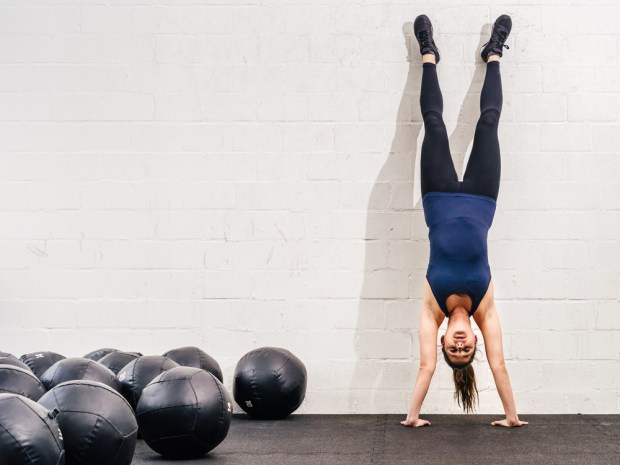Ironing Out The Friction In Getting Fit

On New Year’s Day, most Americans have truly good intentions when it comes to getting fit. They’ve bought a new treadmill or elliptical; they’ve joined the local gym.
However, a lot of that enthusiasm fades a few weeks in, as the average person is reminded of all the reasons they got out of shape to begin with: A lack of time and motivation being two leading reasons, although a lack of knowledge often also influences consumers’ actions — or, rather, inactions.
Gym devotees know how to stretch and lift properly; feeling the burn becomes a positive thing, as opposed to a sign of injury. Gym novices often know none of those things, which can make those initial walks through the gym rather intimidating — as the newly fitness-invested find themselves surrounded by athletic people, all of whom seem to know the appropriate ways to exercise.
Intimidation in a commitment that is already physically taxing and somewhat difficult is oftentimes enough to convince the average consumer that good health can be on next year’s wishlist.
But Handstand — a mobile app that bills itself as the Uber of personal trainers — aims to cut through that friction by making a user’s journey to fitness less complicated and more self-guided.
Making It Easy to Find Help
Founder Tiffany O. Hakimianpour told PYMNTS in an interview that the firm’s name (and some of the inspiration) came from her positive experience in a small format yoga class that she had been referred to when recovering from a running injury. Hakimianpour said yoga wasn’t her first choice for exercise, but it was part of her recovery therapy, and she missed exercising — so she went and discovered a very different type of instructor.
“I was not the most yoga-going-looking person, but she pointed me out and made me feel like a pro and very comfortable (even though it was obvious that I wasn’t). She told me I was stronger and more flexible than I thought, and I trusted her. And by the end of the class, she was able to get me into a handstand, which is something I never thought I could do! So, the company is named Handstand after her, and it symbolizes that you can achieve anything with the right trainer by your side. No matter if it’s a run around the block, a handstand or a personal record,” she said.
The second part of Handstand’s foundation came through Hakimianpour’s struggle to maintain a solid, useful workout routine while she was both working and a student. Personal trainer time, she said, was really helpful to that end, encouraging her to go to the gym, but it was both very expensive (around $150 an hour) and hard to schedule in advance.
“One day, the trainer told me he only gets paid $20 per hour, and I was completely in shock,” she said — in shock, but also inspired to build a better platform to connect people who wanted some assistance from personal trainers while they worked out.
Trainers are often much cheaper than their gym-sponsored counterparts. Handstand workouts cost $62 to $65 per hour-long session, though users must book them in groups of 4 or 6. Those workouts can happen anywhere — in a customer’s home, at a gym or in their favorite local park — and tend to cover an all-encompassing range of activities. Training for a marathon, core strength training, power yoga — all can be found among the 50 or so varieties of workouts Handstand trainers offer. There are even some out-of-the-box choices, like guided meditation.
“And users tend to bounce around from types of workouts. So, you can do any and all, whether you want to work with just one trainer or mix it up. All booked sessions go into your ‘past workouts,’ so you can just hit rebook if you like. We’ve made it very easy for both sides of the marketplace to connect and reconnect. We’re trying to make it easy,” Hakimianpour emphasized.
Users also have the comfort of knowing that all trainers recommended by the platform are vetted and interviewed before being sent on assignments. Trainer profiles are transparent to users signing on.
Today the service is online in 10 cities — New York, Los Angeles and Chicago are reportedly its three most popular hubs — though users can also tap into small group instruction offerings in other locations.
Will it usher in a new era of fitness for a nation of people avoiding the gym? Probably not.
But it might just help some people who are intimidated by the gym — and are currently priced out of personal training — to find a better path toward wellness.
“There are a lot of firms trying to digitize fitness, but they’re not disrupting the industry; they’re just taking the industry and putting it online. But we’re really here to serve both the user and the trainer in a different way,” Hakimianpour said.
